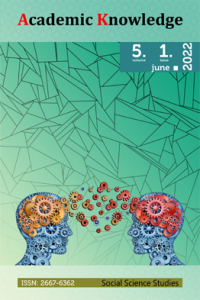Where are the Legal Ḥadīth? A Study of the Muṣannaf of Ibn Abī Shayba
Where are the Legal Ḥadīth? A Study of the Muṣannaf of Ibn Abī Shayba
Muṣannaf of Ibn Abī Shayba provides unparalleled access into the legal thought of the “Companions of ḥadīth” in 2nd/8th and early 3rd/9th century Iraq. his article consists of a quantitative analysis of 3628 narrations found in the Muṣannaf in the books on zakāt, divorce, and ḥadd crimes. It demonstrates that the Prophet Muḥammad was an important authority in the Muṣannaf, but that he appears in only 8.7% of the narrations examined. Furthermore, it shows that the “Companions of ḥadīth” relied upon the legal opinions of many of the same Companions and Successors whom Joseph Schacht identified as the primary authorities for the “Companions of raʾy”. It also identifies a division within the “Companions of ḥadīth” between those who, like Ibn Abī Shayba, categorically reject the opinions of post-Successor jurists, and others who accept them.
Keywords:
ḥadīth, Prophet Muḥammad, Companions, Successors, divorce zakāt, ḥudūd,
___
- Abu Dāwūd. Risālat Abī Dāwūd ilā ahl Makka fī waṣf Sunanih, ed. Muḥammad al-Ṣabbāgh, Dār al-ʿArabiyya, 1975.
- al-Baghdādī, al-Khaṭīb. Tārīkh madīnat al-salām, ed. Bashshār ʿAwwād Maʿrūf, Beirut: Dār al-Gharb al-Islāmī, 2001.
- al-Dhahabī, Shams al-Dīn. Siyar aʿlām al-nubalāʾ, ed. Shuʿayb al-Arnaʾūṭ, Beirut: Muʾassasat al-Risāla, 2001.
- al-Kawtharī, Muḥammad Zāhid. al-Nukat al-ṭarīfa fī ’l-taḥadduth ʿan rudūd Ibn Abī Shayba ʿalā Abī Ḥanīfa, Cairo: al-Maktabat al-Azhariyya li-’l-Turāth, 1999.
- al-Nawawī, Ṣaḥīḥ Muslim bi-sharḥ al-Nawawī, ed. Fūʾād ʿAbd al-Bāqī, Beirut: Dār al-Kutub al-ʿIlmiyya, 2000.
- Brown, Jonathan. the Canonization of al-Bukhārī and Muslim, Leiden: Brill, 2007.
- El Shamsy, Ahmed. "the First Shāiʿī: the Traditionalist Legal hought of Abū Yaʿqūb al-Buwayṭī (d. 231/846),” Islamic Law and Society, 14, 3 (2007): 301-41
- Fierro, Isabel. “the Introduction of ḥadīth in al-Andalus,” Der Islam, 66 (1989): 77-84.
- Hallaq, Wael. Authority, Continuity, Change in Islamic Law. Cambridge: Cambridge University Press, 2001.
- Ibn Abī Ḥātim, al-Jarḥ wa’l-taʿdīl, ed. ʿAbd al-Raḥmān al-Yamānī, Beirut: Dār al-Fikr reprint of the 1952 Hyderabad edition.
- Ibn Abī Shayba, al-Muṣannaf, ed. Ḥamad al-Jumʿa and Muḥammad al-Laḥīdān, Riyadh: Maktabat al-Rushd, 2006.
- Ibn al-Faraḍī, Tārīkh al-ʿulamāʾ wa-’l-ruwāt li-’l-ʿilm bi-’l-Andalus, ed. ʿIzzat al-Ḥusaynī, Cairo: Maktabat al-Khānjī, 1954.
- Ibn Ḥajar al-ʿAsqalānī, al-Muʿjam al-mufahras. Beirut: Muʾassasat al-Risāla, 1998.
- Ibn Ḥajar, Bulūgh al-marām: Attainment of the Objective according to Evidence of the Ordinances, Riyadh: Darussalam, 2002.
- Ibn Ḥajar, Talkhīṣ al-ḥabīr fī takhrīj aḥādīth al-Rāiʿī al-kabīr, ed. ʿĀdil ʿAbd al-Mawjūd and ʿAlī Muʿawwaḍ, Beirut: Dār al-Kutub al-ʿIlmiyya, 1998.
- Ibn Qutayba, al-Maʿārif, ed. tharwat ʿUkāsha. Cairo: Wizārat al-haqāfa, 1960.
- Ibn Saʿd, Kitāb al-ṭabaqāt al-kabīr, ed. ʿAlī Muḥammad ʿUmar, Cairo: Maktabat al-Khānjī, 2001.
- Juynboll, G.H.A. Muslim Tradition, Cambridge: Cambridge University Press, 1983.
- Melchert, Christopher. “he Musnad of Aḥmad ibn Ḥanbal: How it Was Composed and What Distinguishes It from the Six Books,” Der Islam, 82 (2005): 32-51
- Melchert, Christopher. “How Ḥanaism came to Originate in Kufa and Traditionalism in Medina,” Islamic Law and Society, 6, 3 (1999): 318-47.
- Melchert, Christopher. “Traditionist-jurisprudents and the Framing of Islamic Law,” Islamic Law and Society, 8, 3 (2001): 383-406
- Motzki, Herald. “the Muṣannaf of ʿAbd al-Razzāq al-Ṣanʿānī as a Source of Authentic Aḥādīth of the First Century A.H.,” Journal of Near Eastern Studies, 60, no. 1 (1991): 1-21.
- Rawwās Qalʿajī, Muḥammad. Muʿjam lughat al-fuqahāʾ. Beirut: Dār al-Nafāʾis, 1996.
- Schoeler, Gregor. “Die Frage der schriftlichen oder mündlichen überlieferung der Wissenschaften im frühen Islam,” Der Islam, 62 (1985): 210-15.
- Schoeler, Gregor. the Oral and the Written in Early Islam, edited by James E. Montgomery and translated by Uwe Vagelpohl, New York: Routledge, 2006.
- Sezgin, Fuat. Geschichte des Arabischen Schrifttums, Leiden: Brill, 1967.
- ISSN: 2667-6362
- Yayın Aralığı: Yılda 2 Sayı
- Başlangıç: 2018
- Yayıncı: Taner NAMLI
Sayıdaki Diğer Makaleler
Muhammed Teymûr ve Kısa Öykülerinin Tematik Bağlamda Tahlili
Where are the Legal Ḥadīth? A Study of the Muṣannaf of Ibn Abī Shayba
Scott C. LUCAS, Çevirmen: Mohamad Anas SARMINI
Adel Eldesoky ABDELHANNAN SHATLH
Türk Devletlerinde Yönetim ve Kutsal Toprakların Ayrıcalığı “Osmanlı Devleti”
Klasik ve Modern Arapçada İfade Biçimi ve Cümle Kurulumu Farkları
Necip Fazıl Kısakürek’in Poetik Anlayışı Işığında “Feza Pilotu” Şiiri
Sosyal Çatışma ve Toplumsal Öfke
Siyasal Yaşam Açısından Biyografi Yazını: “Plutarch’s Lives” İncelemesi
